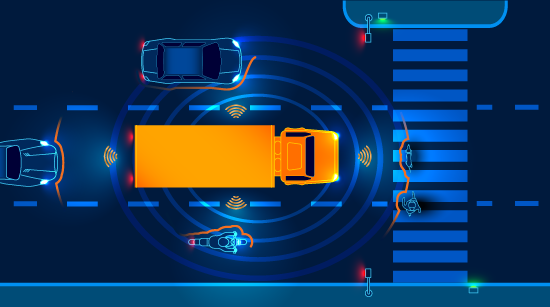
The telematics in your trucks are providing you with a wealth of data about your fleet and your drivers. Using that information to improve driver performance can improve your bottom line and your driver retention.
DRIVER COACHING
To build a well-rounded and strong safety culture, it’s important to have the following programs in place prior to starting a coaching program:
- A formal written safety policy that clearly outlines expectations
- A progressive disciplinary program that includes documented verbal and written warnings
- A safety incentive program to reward and encourage collision- and risk-free performance
OPEN COMMUNICATION
Inform your drivers that the company is implementing a program to improve safe driving. Publish your standards of performance so that drivers will understand what is expected of them and how the program will be managed. It is critical for them to realize how they will benefit from the program.
START BY FOCUSING ON SPEEDING
It is widely believed that speeding is a leading cause of motor vehicle crashes, and research indicates that vehicle speed is directly correlated to increased severity of crashes. Speeding increases the risk of a crash in the following ways:
- Longer reaction distance
- Longer braking distance
- Longer steering distance
- Higher impact severity
- Reduced seat belt/air bag effectiveness, leading to increased injury potential
- Rollover/loss-of-control potential
Research shows that drivers who drive fast on highways have more “hard stops” and “hard turns” than their counterparts. Research also shows drivers who have these speeding events aren’t driving longer distances than others. These “high event count” drivers don’t speed to do their work; they speed because they don’t really understand the risks they are taking.
REGULARLY MONITOR THE DATA
Periodic or infrequent monitoring can send a message to the drivers that your company is not taking the program seriously. If you’re just starting a program, begin by identifying and coaching the bottom 10 percent of drivers who stand out the most. Once you have been able to make positive steps, concentrate on a larger group. However, make sure the size of the group is manageable.
The drivers must truly understand you are concerned about their behavior to protect their health and safety, and that you will continue to monitor their performance and provide training to prevent future errors. They must be sincere about giving you a commitment that they are willing and need to change their unsafe behavior. Continue to track those individuals to determine if their status improves. If it doesn’t, meet with them again and use a more effective approach. Document the guidance that you provide. Good drivers do not need to worry about the data being collected, because it will confirm their good performance.
REWARD GOOD PERFORMANCE
Be sure to recognize drivers who are regularly demonstrating safe performance. This gives them satisfaction in knowing that their safe habits are noticed by management, and it enforces to all drivers that you are monitoring everyone’s performance. Create a performance incentive program, not just a disciplinary program.
Watch this video for more advice on using your telematics for driver coaching.